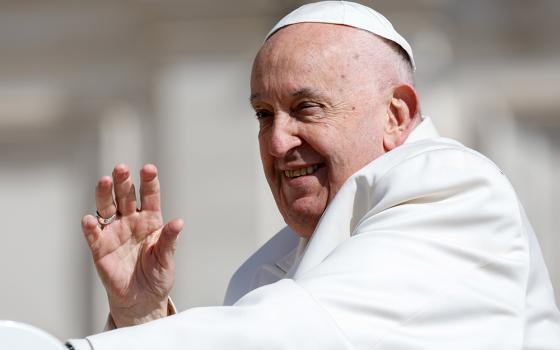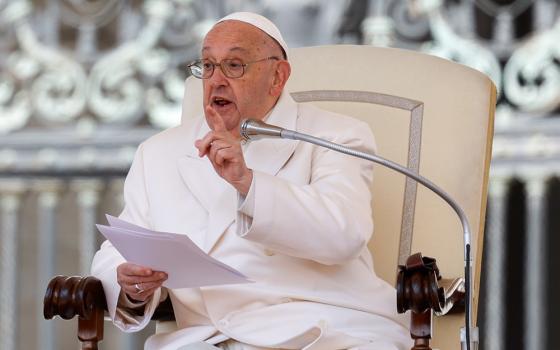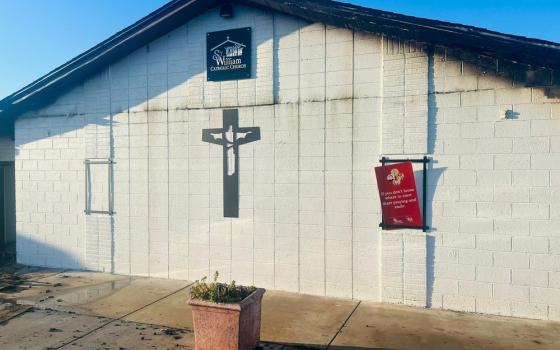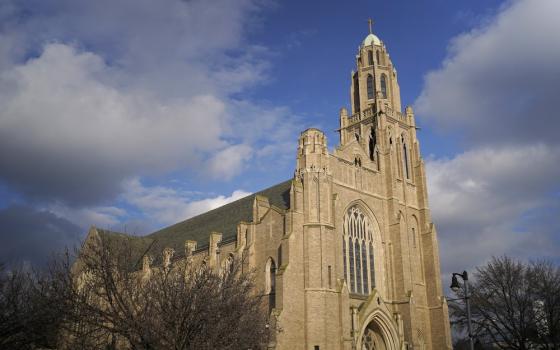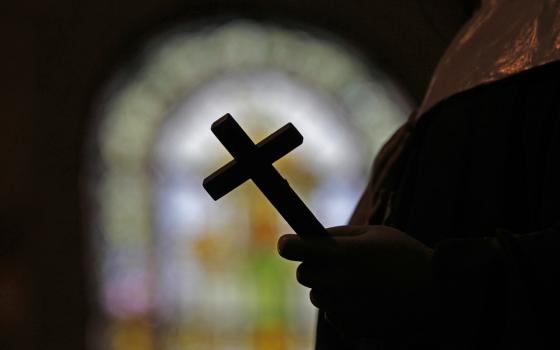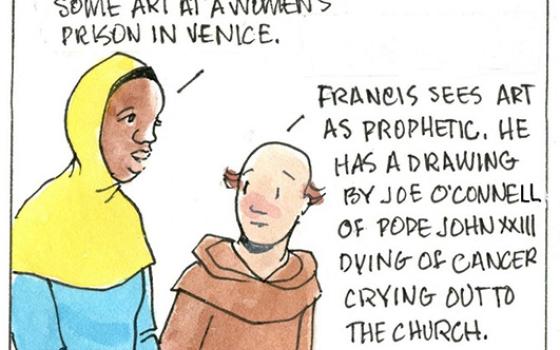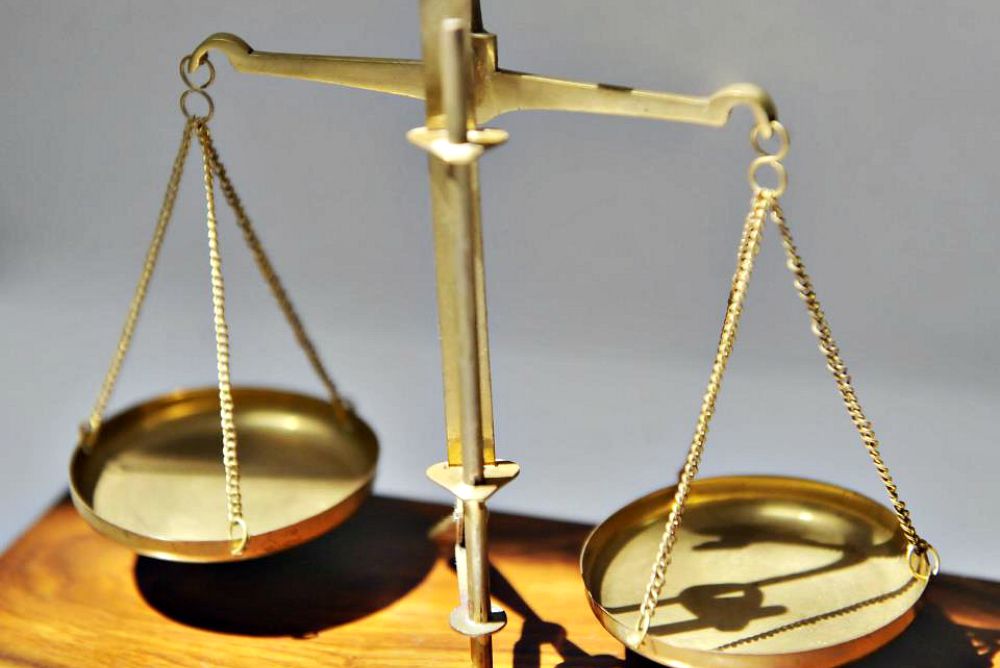
(Wikimedia Commons/Mbiama)
The Pennsylvania Attorney General Josh Shapiro, through a grand jury investigation supervised by his office, has claimed that the investigation revealed the truth about the sexual abuse crisis in the Catholic Church: "Now we know the truth: [the abuse] happened everywhere."
The grand jury's report, released August 2018, highlighted in horrifying detail sexual abuse crimes and misconduct that spanned over 70 years, involved six Pennsylvania dioceses, implicated 300 predator priests and identified over 1,000 child victims. But as with any report that contains such shocking and highly disturbing allegations, people want to know the evidence: Who made the allegations? When did the crimes occur? What was the church's response? More simply, they want to know the details of the investigation and how its findings were reached.
Some commentators who have analyzed the Pennsylvania's grand jury's investigation have found it seriously deficient. Peter Steinfels, in a lengthy Commonweal article, has provided the most trenchant critique. Such criticism has spawned a debate as to how the investigation was conducted and ultimately, the legitimate use of the Pennsylvania grand jury report. (See this piece by Nicholas Frankovich in the National Review, this view by Christopher R. Altieri in The Catholic World Report and this response by George Weigel at First Things.)
As such, the fairness of the investigation and value of the report have been called into question — did the grand jury's investigation consider, and its report properly present, all the relevant information? Has the public been provided an accurate and balanced picture? What is the actual truth?
Currently, at least 14 other attorneys general are investigating clergy abuse of minors in their jurisdiction. Given the publicity of the Pennsylvania grand jury report, most state attorneys general may try to follow some of the same procedures and format used in Pennsylvania.
Yet, if their investigations and the resulting reports are conducted and presented in the same way as in Pennsylvania, then those investigations and reports will face similar criticism. This is because the credibility of any grand jury investigation and report depends upon the fairness of the format, timetable and process employed. And, as seen with the Pennsylvania grand jury report, future efforts to seek the truth will be undermined as long as the investigations and any resulting reports move forward using faulty practices.
Advertisement
Essential lessons for grand jury investigations of alleged clergy abuse
I served as a federal prosecutor for the U.S. Department of Justice for 20 years, specializing in the prosecution of economic crimes. During that time, I supervised scores of complex federal grand jury investigations, many lasting between one and two years. While federal grand juries typically produce only indictments and not reports of their findings, I used many grand juries as investigatory entities, calling large numbers of witnesses to testify and subpoenaing and reviewing voluminous documents, much like the Pennsylvania grand jury conducted its proceedings.
For the last 10 years, I have served as a professor at the University of St. Thomas School of Law in Minneapolis and the University of Arizona James Rogers College of Law in Tucson, where I have taught courses in investigations, ethics, white collar crime, and other criminal law matters.
From these perspectives, I recently wrote an article for NCR on 10 essential lessons for investigating church leaders. In this article, I criticized church leaders for failing to employ best practices and promote accountability in the investigation of bishops, archbishops, and cardinals. But justice cuts both ways and those investigating the church need to be held to standards of due process and fairness. Based on the positive feedback from the first article, I determined to write something similar about grand jury investigations, including assessing and assigning a grade to the work done in Pennsylvania.
What is a grand jury investigation?
A grand jury is composed of between 16 and 23 citizens called to serve several days per month for a term of months, and sometimes as much as two years, to hear and receive evidence of alleged wrongdoing and, where appropriate, return felony criminal charges in the form of an indictment. Some states, like Pennsylvania, also have laws that permit a grand jury to issue a report of any findings.
The investigation is directed by the prosecutor, such as the Pennsylvania attorney general and his staff, who typically drafts any charges or report issued by the grand jury. The grand jury has subpoena power, which means it can require documents to be turned over and compel witnesses to testify. The proceedings are secret and the prosecutor chooses which witnesses to subpoena and what questions to ask. There is no opportunity for defense attorneys to cross examine witnesses. Rather, the only recourse for alleged wrongdoers typically is to offer or agree to testify, or in the case of the Pennsylvania grand jury, submit a written statement for possible inclusion in the final report.
Although a grand jury investigation is rather unique due to its secret and one-sided nature, it should be conducted according to sound investigatory principles. Following a clear set of principles ensures fairness, creates transparency and increases credibility. After reviewing the Pennsylvania grand jury investigation, I found that the investigation did some things well and some things not so well. Overall, if grading the entire effort, it would merit a "B-minus."
What the investigation did right
There are several positives about the Pennsylvania grand jury investigation conducted by the Pennsylvania attorney general's office.
First, the attorney general's office appropriately used its extensive authority to gain access to relevant documents and important testimony, particularly from victim/survivors of clergy abuse. Second, the career prosecutors and their investigators appear to be dedicated public servants who sought to do justice and were steadfast when confronted with resistance to their inquiries. Third, the office provided a lengthy, well-documented report for the public to evaluate. These aspects of the investigation deserve high marks.
The grand jury investigation pressured various dioceses to cooperate. In response to their investigation, the dioceses were forced to respond. In doing so, secret files were opened and explained the truth about how dioceses responded to each instance of abuse.
Furthermore, the investigation pressured the dioceses to reveal the names of all accused priests, permitting the attorney general's office to review the sufficiency of the dioceses' response to those allegations. In short, the investigation created transparency — emphasizing to the church that when dealing with clergy abuse, healing victims and protecting future children should be the only goal, not preventing scandal.
The attorney general's office confronted any effort to resist its investigation. It utilized the grand jury's statutory powers to gain access to important information. For example, the Diocese of Erie, Pennsylvania, on the advice of counsel, chose not to respond to a subpoena. Undeterred, the prosecutor used a search warrant to gain access to that material. That decision to remain committed to obtaining relevant evidence proved that this was a serious investigation. In response, the Diocese of Erie hired new counsel, no longer resisted, and shared its documents with the attorney general's office. The attorney general's office ultimately criminally charged two priests, one from the Diocese of Erie, for sexually assaulting children. The attorney general's office's dedication and vigilance, working through the grand jury, potentially saved other victims from abuse.
The grand jury report is available on the Pennsylvania attorney general's website. It is vital that the report is available to the public because it reveals many previously unknown, abhorrent and reprehensible facts about what the grand jury learned and serves as a reminder of the terrible abuse that can result when an organization, like the Catholic Church, utterly fails in its legal and moral obligations and duties. It is also worth noting that the grand jury published another version of the report that included an appendix, containing responses from the dioceses, bishops and priests. It is unclear why the Pennsylvania attorney general decided to publish two versions of the grand jury's report, one of which is incomplete, and which at best has been confusing to many and at worst shows evidence of bias and unfairness.
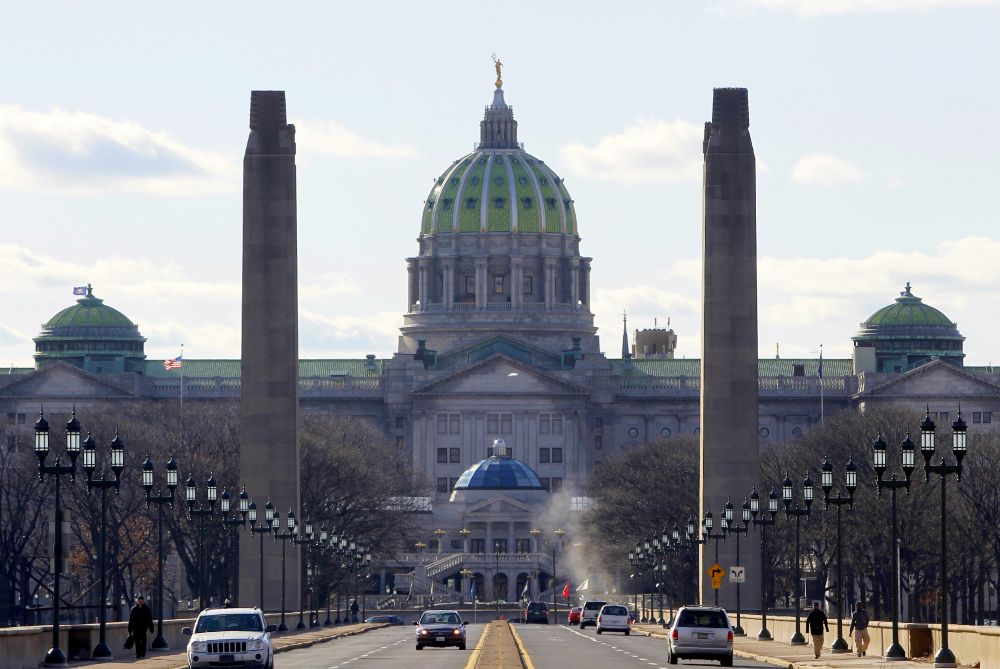
The Pennsylvania statehouse seen from the State Street bridge in Harrisburg (CNS/Reuters/Tim Shaffer)
What the investigation did wrong
It should not be understated that the Pennsylvania grand jury investigation accomplished much on behalf of the public interest to uncover decades of instances involving clergy abuse, misconduct and cover-up. However, its failings and shortcomings should also be highlighted.
It is questionable whether Josh Shapiro, Pennsylvania attorney general, was the right person to oversee the conclusion of the grand jury investigation and issuance of its report. He had no experience as a prosecutor prior to his election as AG in 2016. It has been widely recognized how he aspires to achieve higher elected office. The initials "AG" have long been viewed in many states to stand for "aspiring governor."
We can assume that Shapiro relied heavily on career prosecutors in guiding and conducting the actual day-to-day investigation, who likely drafted the entire grand jury report. However, Shapiro himself presumably reviewed the language in the report and approved of its overbroad generalizations, which have been subject to much criticism — "It happened everywhere" and "They hid it all." Further, in his unusual press conference releasing the report and public comments since, he clearly has embraced an agenda of self-promotion while undertaking a frontal media assault on the Catholic Church in Pennsylvania, which is essentially the "accused." Thus, Shapiro arguably has violated one of the special ethical duties of a prosecutor, that is, to "refrain from making extrajudicial comments that have a substantial likelihood of heightening public condemnation of the accused." As a result, he has opened himself — and his office — to claims of bias and unprofessional conduct and risked tainting the grand jury's work.
Although the attorney general's office attempted to account for anticipated claims of bias by having the FBI assign "members of its National Center for the Analysis of Violent Crime to review a significant portion of the evidence received by the grand jury," this does not resolve the issue of the investigation's impartiality. It is the prosecutor who determines what evidence is presented to the grand jury, and, in this case, the evidence that the FBI reviewed. This type of unfettered prosecutorial discretion, mixed with possible personal political motives, can undermine the ultimate legitimacy of any investigation.
The attorney general's office failed to follow every legitimate lead to find the truth, forgetting that, again according to the ethical duties of a prosecutor, a "prosecutor has the responsibility of a minister of justice and not simply that of an advocate. This responsibility carries with it specific obligations to see that the defendant is accorded procedural justice." It is an investigatory failure not to pursue the truth and by itself would merit a very low grade.
In the appendix, there are legal memoranda that explain some of the deficiencies in the attorney general's office investigation. For example, few priests or church officials testified before the grand jury and some who wanted to do so were denied that opportunity. Take the case of Msgr. Thomas Klinzing who was named by the grand jury report as a church leader in the Diocese of Greensburg, Pennsylvania, and who played an important role in the "handling of allegations of priest sexual abuse." The attorney general's office would not allow the grand jury to hear his testimony — neither to corroborate, expand upon or offer alternative information. A fair and robust investigation would never avoid such testimony.
Moreover, at least one accused priest who challenged the allegations apparently was not permitted to testify even when he requested to do so. Although hearing testimony from any particular person is not required under Pennsylvania law, refusing to do so is hard to justify in terms of due process and the ethical duties of a prosecutor. Why would any attorney general's office purposefully have a grand jury not pursue the entire truth when an accused's future life and reputation is at stake?
Unlike most grand juries where any charges can be defended in court, the Pennsylvania grand jury, guided by the attorney general's office, was the sole arbiter of what was considered and reported or not considered or reported. Unlike in a typical criminal case where a charged defendant is due his day in court, no Pennsylvania judge reviewed the sufficiency of the grand jury report's evidence, the prosecution's conduct, or any other matter to which an accused normally could seek impartial review and then a separate appeal. As such, Shapiro and his office served as prosecutor and judge, and then guided the grand jury to issue findings that no one could challenge.
Every investigation results in errors, gaps and inconsistencies by the government that later can be addressed through the adversarial process. But in the Pennsylvania grand jury process, no such avenue existed. Any resulting harm remains. For example, the attorney general's office apparently did not clarify the identity of one of the priests alleged responsible for poorly handling abuse allegations. Msgr. Andrew Karg is mentioned in the report on multiple occasions, but he claims that such allegations concern his cousin, Msgr. William Karg. If the grand jury investigation did not perform the due diligence required to confirm the correct identity, this is a denial of due process and the fault of the prosecutor.
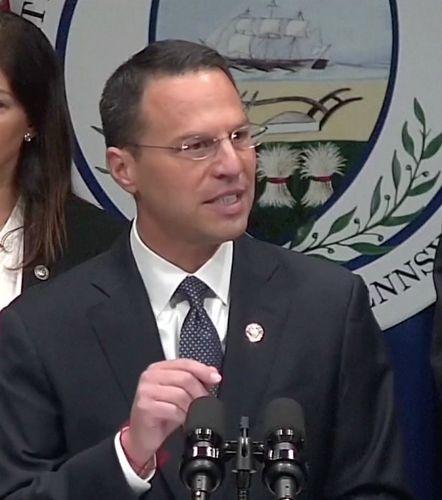
Pennsylvania Attorney General Josh Shapiro speaks during an Aug. 14, 2018, news conference (CNS/Reuters)
Finally, the report attempts to paint a picture that the Catholic Church is still hiding clergy who sexually abuse children. For example, the grand jury report states that one of the goals of the report is to motivate "self-reflection within the church, and a deep commitment to create a safer environment for its children." The issue with this goal is that it ignores how much has been accomplished in Pennsylvania and elsewhere since 2002. The Pennsylvania dioceses submitted many pages explaining how their desire to create a safer environment for its children has led to many systematic changes. And, by reading the response of Erie Bishop Lawrence Persico or the K&L Gates report prepared for the Erie Diocese, one finds compelling evidence that the threat to today's children in the Catholic Church in Pennsylvania is extremely low. At a minimum, this type of clear progress by the church in protecting children deserved to be better recognized by the attorney general in communicating with the public on behalf of the grand jury.
All in all, the Pennsylvania grand jury investigation was both good and bad. As such, we agree with Steinfels that it could have been done much better. And future investigations should strive to do much better to achieve justice and fairness.
How should future grand jury investigations be conducted?
There are three components to an effective investigation: format, timetable and process. We will use these three categories to prescribe what future grand jury investigations should do to be reliable, trustworthy and credible.
Format
An investigation's format is comprised of who, how and what. The "who" is the prosecutors and investigators, who conduct the investigation that determines what information is presented to the grand jury. The "how" concerns the evidence obtained and presented to the grand jury. And the "what" references the final product in terms of what type of report should the grand jury produce to share its findings.
First, the attorney general's office should use experienced prosecutors and investigators to conduct the investigation. The goal should be to find the truth by interviewing each and every possible lead, including victims and accused clergy. The investigation should seek to find evidence, not seek to tell a story.
Second, when only a final report is envisioned, the prosecutors should present as much information to the grand jury as possible. And, when doing so, all relevant information should be presented at the same time. Accordingly, if a victim testifies, then the priest, diocesan representative, bishop and other people involved in handling that specific accusation of abuse should testify as well. The grand jury should hear as much of the story from all available viewpoints. This will permit the grand jury members to arrive at an informed and just determination.
Finally, the findings of the grand jury investigation should be presented in a report broken down by priest. Each priest's section should be separated by allegation and it should clearly state the allegation: what happened, when the events occurred, the age of the victims and when the allegations were first presented to authorities. The names of bishops involved should be broken down by allegation. In short, it should be detailed, clear and complete. Furthermore, each priest's section should have an addendum that includes all relevant information reviewed by the grand jury.
Not only should all relevant information be included, the report should not include conclusory statements based upon inferences nor stories that are supposed to highlight particular failings. If criminal prosecutions come out of the grand jury investigation, let the attorneys weave those stories. If not, let the public draw their own conclusions from the evidence, presented in an unbiased manner.
Timetable
For a grand jury investigation to accomplish the prescribed format, it needs sufficient time to do so. An extensive timetable permits investigators to review documents and pursue all leads, gives the grand jury time to hear testimony from all relevant individuals and review relevant documents, and provides prosecutors and grand jurors time to compile a substantial, unbiased report. Such an investigation typically will take one to two years.
Even in the face of political pressures and agendas, career prosecutors must insist on avoiding a rush to judgment by attorneys general seeking media attention. For example, Illinois' announcement by ex-Attorney General Lisa Madigan, shortly before her term expired, highlighted so-called "preliminary findings" involving the disclosure of at least 500 allegations of clergy abuse that she stated were never made public by the Catholic Church. At best, claims about these cases were presented prematurely and without sufficient review, given that the investigation just began in August 2018 — only four months prior to her announcement. At worst, such hasty reports will taint future investigatory efforts and the public's perception of the motives behind the investigation and the attorney general who sought the media attention.
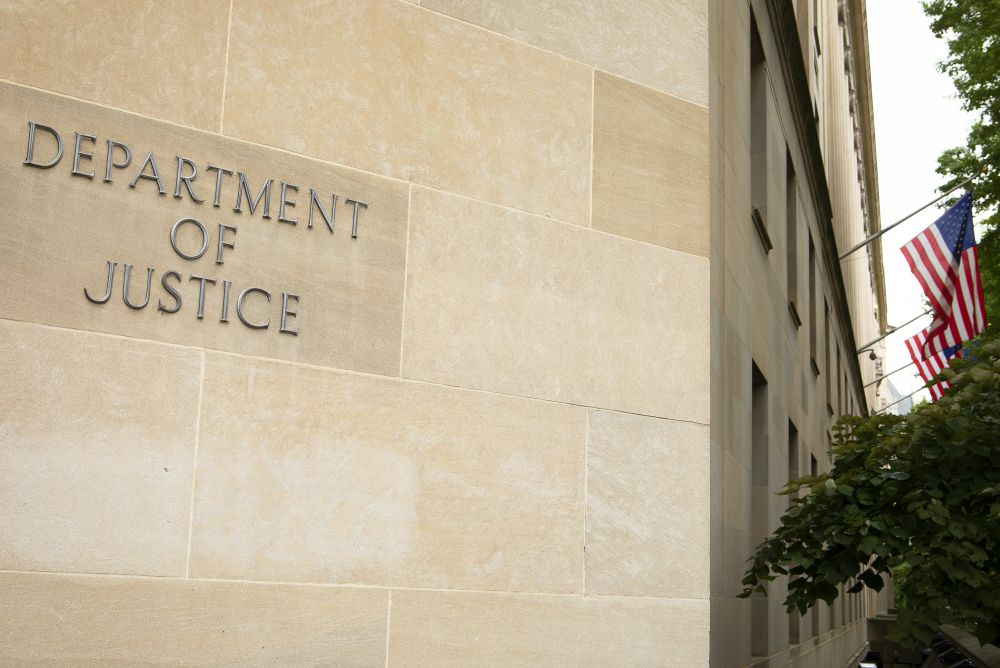
The Department of Justice building in Washington. The Justice Department said in October 2018 it was opening its own investigation into Pennsylvania's Catholic dioceses and clergy sex abuse claims. (CNS/Tyler Orsburn)
Process
Any future investigatory process must be clear and transparent to the public. Establishing a process gives the public a sense of progress, which will encourage patience in the outcome and enable the investigation to take the necessary amount of time needed to be thorough.
We offer the following recommended process for any future grand jury investigations of clergy sexual abuse:
- Assign or hire the most experienced and best qualified investigators and prosecutors to obtain and review the evidence. This should include those specially trained to work with victims/survivors of sexual abuse.
- Use all means available, including subpoenas and, if necessary, search warrants, to access all relevant Catholic Church documents.
- Invite anyone to make a claim against the Catholic Church for sexual abuse.
- Have investigators interview every person who makes a claim after reviewing relevant documents.
- Inform the dioceses of all clergy or laypersons implicated by the investigation.
- Inform the individual persons implicated by the investigation.
- Give the dioceses and implicated persons a chance to respond to the allegations.
- Interview all who respond.
- After the investigators and prosecutors sift through the evidence gathered, have prosecutors present as much relevant information to the grand jury as possible. Be sure that all information concerning the same priest and each allegation ideally is heard at the same time.
- The prosecutor who typically does all the questioning of witnesses should invite grand jurors to ask their own questions in order that the grand jury may be better informed to judge the credibility of both victims and accused.
- Do not have prosecutors write any parts of the grand jury report before the grand jury investigation concludes, but rather have the grand jury write a statement expressing its conclusion about, or vote upon, each allegation.
- In drafting a final report, prosecutors should prepare a summary statement about each priest, broken down by allegation, that includes any responses to the allegation.
- The prosecutors should place the grand jury's vote or conclusion — as written by the grand jury — after each allegation.
- Before publicly releasing any report, it should be shared with implicated persons, giving them an opportunity to submit any additional information.
- Any additional information should be attached as an addendum to each priest's section (not attached at the end of the document).
- If the grand jury has recommendations for the future, those recommendations should be placed at the end of the document. This will encourage everyone to read the entire report. Those recommendations should be broken down by which entity can address those recommendations.
- Publish everything in one document, with a table of contents and clearly organized sections.
If this process is followed, it will help maintain the integrity of the investigation and remove opportunities for criticism.
Investigations of clerical sexual abuse are ongoing. They should be undertaken as methodical investigations intended to do justice to those who have been harmed, enhance public safety and advance the common good. Current and future investigations must not appear to be a "race to the finish."
Our own research was unable to uncover a clear format, timetable or process that is being used by these investigations. If these fundamental issues are not addressed, the upcoming grand jury reports will be exposed to the same criticisms as the Pennsylvania grand jury report. Adopting the above would be a good starting point to eliminate those weaknesses. It is only once those weaknesses are removed that these reports will be viewed as reliable, trustworthy and credible.
On a final note, it has been reported that the U.S. Department of Justice, through the U.S Attorney in Philadelphia, has requested the Catholic Church to preserve all clergy abuse related documents throughout the country. This may or may not signal that an expansive federal grand jury investigation is under consideration or even underway. Such an investigation or some such national commission investigation would present many advantages and challenges not found in the many current efforts by state attorneys general. But we first should await the results of the upcoming Vatican summit of bishops on clergy sexual abuse before determining how best to proceed.
[Hank Shea is a senior distinguished fellow at the University of St. Thomas School of Law in Minneapolis and a professor of practice at the University of Arizona James E. Rogers College of Law in Tucson. He previously served as an assistant U.S. attorney for the district of Minnesota. Thomas Wheeler is a third-year student at the University of St. Thomas School of Law, who provided valuable research and assistance in drafting this article. The views expressed in this article are solely their own.]





